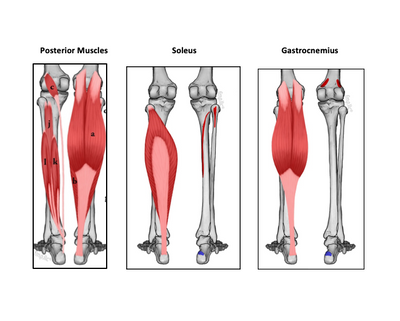 26th Aug 2021
26th Aug 2021
How to Stretch and Strengthen the Calf Muscles (Gastrocnemius and Soleus Muscles)
Posterior to the tibia bone are several muscles that collectively form the calf. As you can see in the illustration, there are six (6) muscles located posterior to the tibia. The three muscles identified by the letters j, k, l are nicknamed Tom, Dick, and Harry to represent the first letters of the three muscles (T=Tibialis Posterior, D=Flexor Digitorum Longus, H=Flexor Hallucis Longus).
| Posterior Muscles | Soleus | Gastrocnemius |
 |  |  |
However, the gastrocnemius (a) and soleus (b) muscles form the bulk of the muscle mass and are typically referred to as the “calf” muscles. There is a small muscle named the plantaris (c) that is sandwiched in between the gastrocnemius and soleus muscles.
The gastrocnemius originates by two heads on the posterior lower femur just above the medial and lateral femoral condyles, thus crossing the knee as it runs toward its insertion point. The soleus originates on the upper posterior fibula and soleal line on the upper posterior tibia and does not cross the knee joint as it runs toward its insertion point. Both muscles pass posteriorly to the ankle joint for a common insertion on the posterior calcaneus via the Achilles tendon.
The Muscle Length-Tension Relationship
The potential strength of a muscle’s contraction is determined by the number of actin-myosin cross-bridges that form in the sarcomere during contraction. Therefore, to maximize the amount of force of a muscle’s concentric contraction, all actin-myosin bonding sites must be formed and involved. Typically, this is achieved when a muscle is slightly stretched.
To minimize the amount of force or active tension a muscle can produce when contracting, place “slack” in the muscle by reducing the amount of actin-myosin cross-bridges that participate in the contraction, officially referred to as shortened active insufficiency.

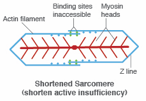
How to Isolate the Soleus Muscle from the Gastrocnemius Muscle
With an understanding of the muscle length-tension relationship, we can effectively isolate the soleus muscle for strenthening or stretching by placing “slack” or “shortend active insufficiency” in the gastrocnemius muscle.
To Isolate the Soleus Muscle For Strengthening
This is accomplished by placing the knee in a flexed position when performing ankle plantarflexion resistance traiining, such as performing reps of heel raises with a barbell across the distal thigh.
 |  |
This places “slack” in the gastronemius muscle and reduces its involvement in performing ankle plantarflexion and places a greater challenge on the soleus muscles for a more effective and intense training.
Conversely, to place the greater challenge to the gastrocnemius muscle, perform planterflexion exercises (heel raises) against resistance with the knees extended. This places the gastrocnemius on stretch, maximizing its actin-myosin cross-bridges and ability to exert force for a greater workout.
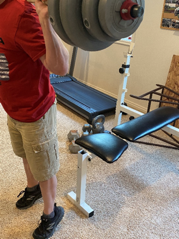 |  |
To Isolate the Soleus Muscle For Stretching
Also, when stretching the soleus, flex the knee to place “slack” in the gastrocnemius muscle so that a greater stretch force is placed on the soleus. Leaning into the wall causes ankle dorsiflexion and stretches the soleus.
 |
Conversely, to place a greater stretch to the gastrocnemius muscle (by increasing the distance between the origin and insertion of the muscle) keep the knee in an extended position when leaning forward against the wall.
 |
By comparison, when stretching to isolate the soleus you will feel the stretch more toward the lower part of the calf. When stretching to isolate the gastrocnemius you will feel the stretch more toward the top of the calf in the belly of the gastrocnemius muscles.
The Importance of Good Strength in your Calf Muscles
- The gastrocnemius and soleus are the two primary muscles involved in push-off in the walking/gait cycle, running and jumping. Being able to perform proper push-off is essential in all these activities and therefore affect just being able to walk with a normal gait, to affecting athletic performance in virtually any sport.
The Importance of Good Flexibility in Your Calf Muscles
- Tight calf muscles are one of the contributing factors to the development of plantar fasciitis, an inflammatory condition of the plantar fascia that attaches from the calcaneus or heel bone to the plantar surfaces of the bones of the toes. With this condition pain is felt at the sole of the foot on anterior part of the heel bone when rising in the morning and standing on our feet, when weight bearing from standing up from a prolonged period of sitting, or after the prolonged. To learn more about plantar fasciitis and how to properly rehabilitate it click HERE.
- Following an ankle sprain, a person’s ankle range of motion quickly deteriorates, especially dorsiflexion. With the other components of ankle rehabilitation, regaining ankle dorsiflexion range of motion is an essential component of proper ankle rehab to be declared ready to return to sport or activity.
Two Products Designed to Stretch and Strengthen the Calf Muscles:
Some products are designed to provide one specific treatment intervention and other products are designed to address multiple interventions. Here are two products that have a few features designed to treat plantar fasciitis:
| The BOB Incredible Calf Master Stretch System: This product has been around for nearly two decades and is found in many physical therapy clinics and patient homes. Its dimensions are 16” L x 6.5” D x 3” H. It weighs 4 pounds. To read about this product: https://www.prohealthcareproducts.com/the-bob-incredible-calf-master-stretch-system/ | 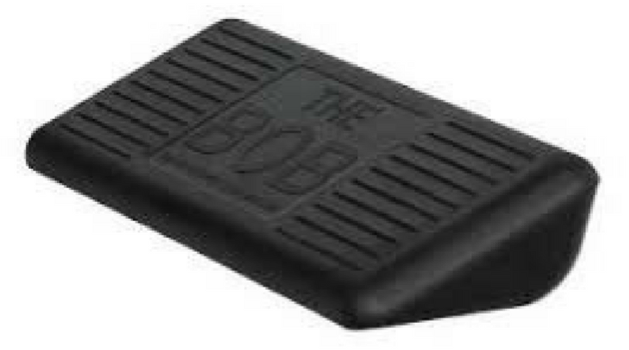 BUY NOW |
| The Foot Ramp: The Foot Ramp is a revolutionary new product of industrial strength design that is used in gyms and clinics. Its dimensions are 19” L x 8” W x 10.5” H. To read about this product:https://www.prohealthcareproducts.com/the-footramp-calf-stretching-and-muscle-building-plantar-fascia-rehabilitation/ | 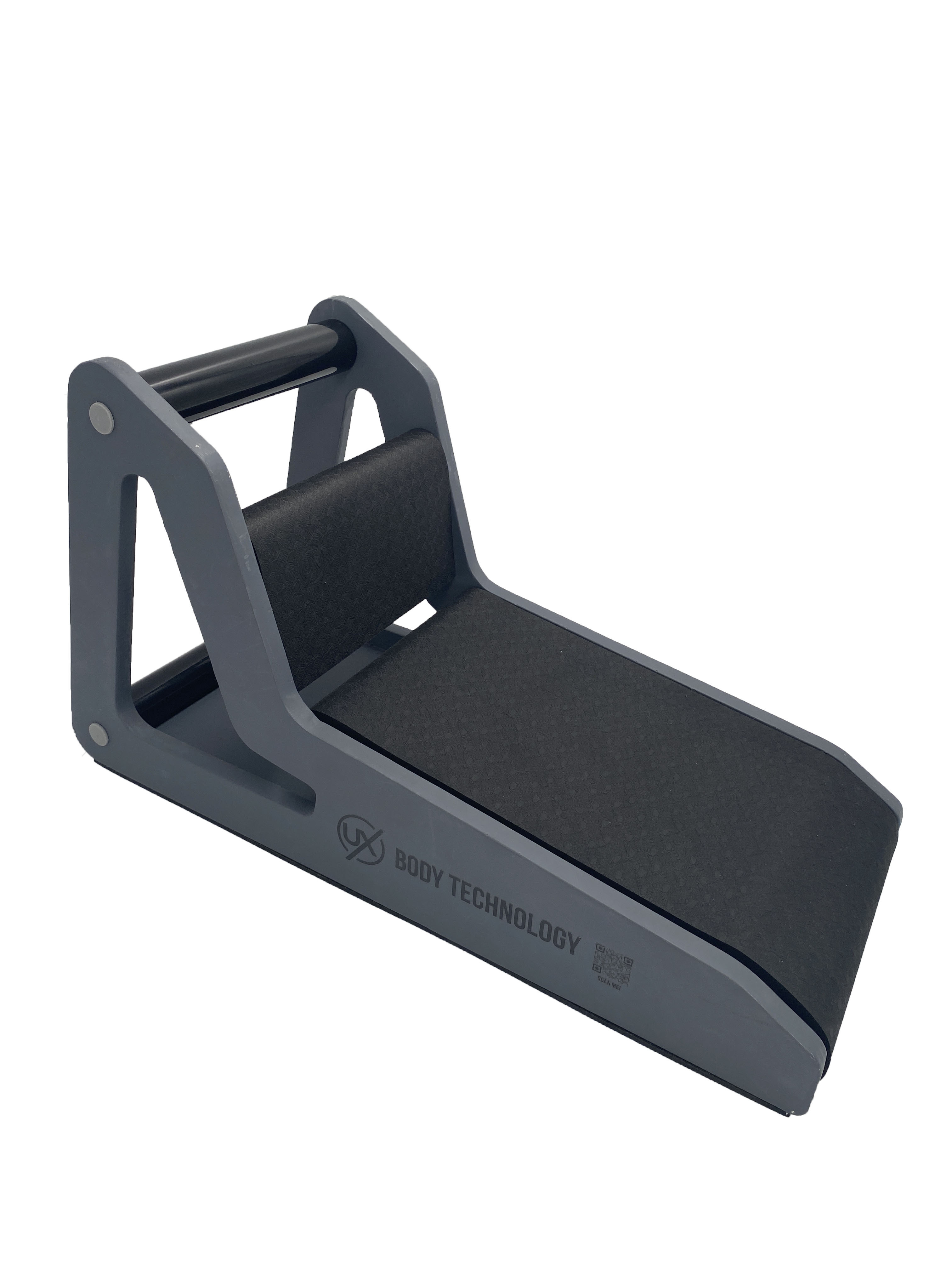 BUY NOW |





